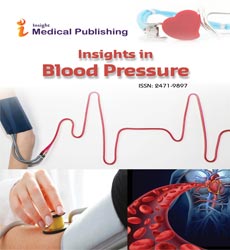Abstract
Diastolic Dysfunction and its Therapy in Hypertension
Left Ventricular (LV) Diastolic Dysfunction (LVDD) is characterized by changes in LV diastolic fill and is a strong predictor of cardiovascular events and heart failure. In the general population, hypertension is the most common cause of LVDD, and it promotes it through a number of mechanisms, including hemodynamic overload and myocardial ischemia. In hypertensive patients, age, ethnicity, dietary salt, obesity, diabetes mellitus, and chronic renal illness are all factors that contribute to LVDD. Lowering blood pressure with antihypertensive medications can improve LVDD; however, it is unclear if this increase in LV diastolic function will enhance cardiac vasculature. Left Ventricular (LV) Diastolic Dysfunction (LVDD) is characterized by changes in LV diastolic filling and is a strong predictor of cardiovascular events and heart failure. Hypertension is the leading cause of LVDD in the general population, and it promotes it through a variety of mechanisms, including hemodynamic excess and myocardial infarction. (Age, ethnicity, dietary sodium, obesity, diabetes mellitus, and chronic renal disease are all factors that contribute to LVDD in hypertension patients.) Lowering blood pressure with antihypertensive medications can improve LVDD; however, it is unclear if this increase in LV diastolic function will enhance cardiac vasculature.
Author(s):
Parash Kash
Department of Thoracic and Cardio-vascular Surgery, University of Nairobi, Kenya
Abstract | PDF
Share this

Google scholar citation report
Citations : 71
Insights in Blood Pressure received 71 citations as per google scholar report
Abstracted/Indexed in
- Google Scholar
- China National Knowledge Infrastructure (CNKI)
- Directory of Research Journal Indexing (DRJI)
- WorldCat
- Secret Search Engine Labs
Open Access Journals
- Aquaculture & Veterinary Science
- Chemistry & Chemical Sciences
- Clinical Sciences
- Engineering
- General Science
- Genetics & Molecular Biology
- Health Care & Nursing
- Immunology & Microbiology
- Materials Science
- Mathematics & Physics
- Medical Sciences
- Neurology & Psychiatry
- Oncology & Cancer Science
- Pharmaceutical Sciences
